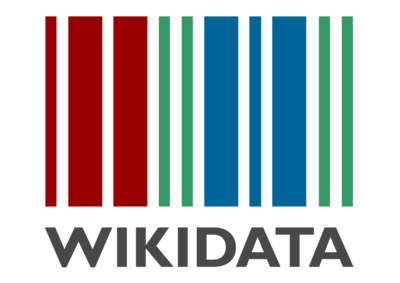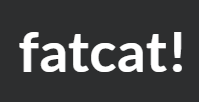La Revista Guillermo de Ockham brinda un acceso inmediato y abierto a su contenido, basado en el principio de ofrecer al público un acceso gratuito a las investigaciones para brindar un intercambio global de conocimiento. A menos que se establezca lo contrario, el contenido de esta revista tiene una licencia con Creative Commons Attribution-NonCommercial-NoDerivatives 4.0 International (CC BY-NC-ND 4.0) http://creativecommons.org/licenses/by-nc-nd/4.0/
- Atribución: debe otorgar el crédito correspondiente, proporcionar un enlace a la licencia e indicar si se realizaron cambios. Puede hacerlo de cualquier manera razonable, pero no de ninguna manera que sugiera que el licenciante lo respalda a usted o su uso.
- No comercial: no puede utilizar el material con fines comerciales.
- Sin derivados: si remezcla, transforma o construye sobre el material, no puede distribuir el material modificado.
- Sin restricciones adicionales: no puede aplicar términos legales o medidas tecnológicas que restrinjan legalmente a otros de hacer cualquier cosa que permita la licencia.
Resumen
En este trabajo se explora la solución colectiva de problemas mediante la comparación del desempeño grupal humano y los algoritmos de inteligencia de enjambres. En el estudio participaron treinta estudiantes universitarios de distintos programas académicos, con edades entre dieciocho y treinta años que fueron asignados en grupos conformados por tres, cinco o siete integrantes. Se utilizó una versión espacial (campo abierto) del problema del agente viajero. El desempeño de los participantes se comparó con la ejecución de algoritmos de inteligencia colectiva de enjambres. Los resultados muestran algunas semejanzas entre la cognición de grupo y la cognición de enjambre en los mecanismos de procesamiento de información, las estrategias de organización colectiva y las pautas de elección o estrategias de consenso.
Palabras clave:
Referencias
Brodbeckn, F. C., Kerschreiter, R., Mojzisch A., Frey D., & Schulz-Hardt, S. (2002). The dissemination of critical, unshared information in decision-making groups: the effects of pre-discussion dissent. European Journal of Social Psychology, 32, 35-56. doi: 10.1002/ejsp.74
Chemers, M. (2000). Leadership research and theory: A functional integration. Group Dynamics: Theory, Research, and Practice, 4(1), 27-43. doi: 10.1037//1089-2699.4.1.27
Chronicle, E. P., MacGregor, J. N., Lee, M., Ormerod, T. C., & Hughes, P. (2008). Individual Differences in Optimization Problem Solving: Reconciling Conflicting Results. The Journal of Problem Solving 2(1), 41-49. doi: http://dx.doi.org/10.7771/1932-6246.1030
Gershenson, C. (2010). Computing Networks: A general framework to contrast neural and swarm cognitions. Paladyn journal of behavioral robotics, 1(2), 147-153. doi: 10.2478/s13230-010-0015-z
Gershenson, C. (2004). Cognitive Paradigms: Which One is the Best? Cognitive Systems Research, 5(2), 135-156.
Goldstone, R. L., Jones, A., & Roberts, M. E. (2006). Group path formation. IEEE Transactions on System, Man, and Cybernetics, Part A, 36, 611-620.
Greitemeyer, T., & Schulz-Hardt, S. (2003). Preference-consistent evaluation of information in the hidden profile paradigm: beyond group-level explanations for the dominance of shared information in group decisions. J. Personal. Soc. Psychol. 84(2), 322-339. doi: 10.1037/0022-3514.84.2.322
Johnson, S. (2003). Sistemas emergentes. México: Fondo de cultura económica.
Kameda, T., & Hastie, R. (1999). Social sharedness and adaptation: adaptive group decision heuristics. Presented at 17th Subj. Probabil., Util., Decis.-Mak. Conf., Mannheim, Ger.
Kameda, T., Takezawa, M., Tindale, R.S. & Smith, C. M. (2002). Social sharing and risk reduction: exploring a computational algorithm for the psychology of windfall gains. Evolution and Human Behavior 23, 11–33.
Karaboga, D. (2010). Artificial bee colony algorithm. Scholarpedia, 5(3), 6915. doi:10.4249/scholarpedia.6915
Karaboga, D., & Akay, B. (2009). A Survey: Algorithms Simulating Bee Swarm Intelligence. Artificial Intelligence Review, 31(1), 68-85.
Krause, J., Graeme, D. R., & Krause, S. (2009). Swarm intelligence in animals and Humans. Elsevier 25(1), 28-34. doi:10.1016/j.tree.2009.06.016
Krause, S., James, R., Faria, J. J., Ruxton, G. D., & Krause, J. (2011). Swarm intelligence in humans: diversity can trump ability. Animal Behaviour, 81(5), 941-948. doi: 10.1016/j.anbehav.2010.12.018
Kravitz, D. A. & Martin, B. (1986). Ringelmann rediscovered: The original article. Journal of Personality and Social Psychology, 50, 936-941.
Lee, M. D., & Cummins, T. D. R. (2004). Evidence accumulation in decision making: Unifying the "take the best" and the "rational" models. Psychonomic Bulletin & Review, 11(2), 343-352.
Macgregor, J. N., & Ormerod, T. C. (1996). Human performance on the travelling salesman problem. Perception & Psychophysics 58(4), 527-539.
Macgregor, J. N., Ormerod, T. C., & Chronicle, E. (2000). A model of human performance on the traveling salesperson problem. Memory & Cognition, 28(7), 1183-1190.
Marshall, J. R., Bogacz R., Dornhaus A., Planqué R., Kovacs T. & Franks N. R. (2009) On optimal decision-making in brains and social insect colonies. Journal of the Royal Society Interface. doi: 10.1098/rsif.2008.0511
Newell, B., & Lee, M. (2011). The Right Tool for the Job? Comparing an Evidence Accumulation and a Naïve Strategy Selection Model of Decision Making. Journal of Behavioral Decision Making. 40, 946–956.
Passino, K. M., Seeley, T. D., & Visscher, P. K., (2004). Quorum sensing during nest-site selection by honey bee swarms. Behav Ecol Sociobiol 56, 594-601. doi: 10.1007/s00265-004-0814-5
Passino, K. M., Seeley, T. D., & Visscher, P. K. (2008). Swarm cognition in honey bees. Behavioral Ecology and Sociobiology 62, 401-414.
Seeley, T. D., Visscher P. K., & Passino K. M. (2008). Group decision making in honey bee swarms. American Scientist Online, 94(3), 1-9.
Trianni, V. (2008). Swarm Cognition. Workshop ISTC-CNR, Rome Italy.
Trianni, V. Tuci, E., Passino, K. M., & Marshall, A. R. (2011). Swarm Cognition: an interdisciplinary approach to the study of self-organising biological collectives Swarm Intell, 5, 3–18. doi 10.1007/s11721-010-0050-8
Van Ginkel, W. P., & van Knippenberg, D. L (2012). Group leadership and shared task representations in decision making groups. The Leadership Quarterly, 23(1), 94-106. doi: 10.1016/j.leaqua.2011.11.008
Van Ginkel, W. P., & van Knippenberg, D. L. (2008). Group information Elaboration and group decision making: The role of shared task representations. Organizational Behavior and Human Decision Processes 13(4), 265-280. doi: 10.1037/a0016045
Vickers, D., Butavicius, M., Lee, M. D., & Medvedev, A. (2001). Human performance on visually presented traveling salesman problems. Psychological Research 65(1), 34-45. doi:10.1007/s004260000031
Vickers, D., Lee, M. D., Dry, M., & Hughes, P. (2003). The roles of the convex hull and the number of potential intersections in performance on visually presented traveling salesperson problems. Memory Cognition, 31(7), 1094-1104.
Winquist, J. R. & Larson JR. (1998). Information pooling: When it impacts group decision making. Journal of Personality and Social Psychology, 74(2), 371-377.
Wittenbaum, G. M.,Hubbell, A. P., & Zuckerman, C. (1999). Mutual enhancement: Toward An understanding of the collective preference for shared information. Journal of Personality and Social Psychology, 77(5), 967-978.
Yaniv I. & Kleinberger E. (2000). Advice taking in decision-making: Egocentric discounting and reputation formation. Organizational Behavior and Human Decision Processes, 83(2):260-281. doi: 10.1006/obhd.2000.2909
































